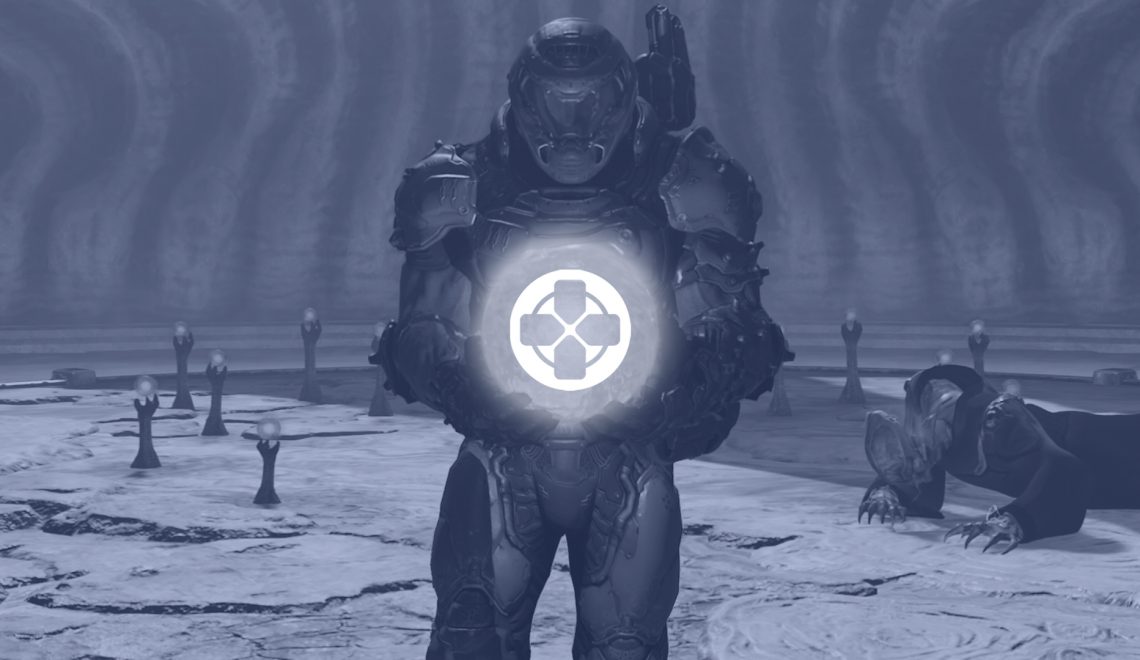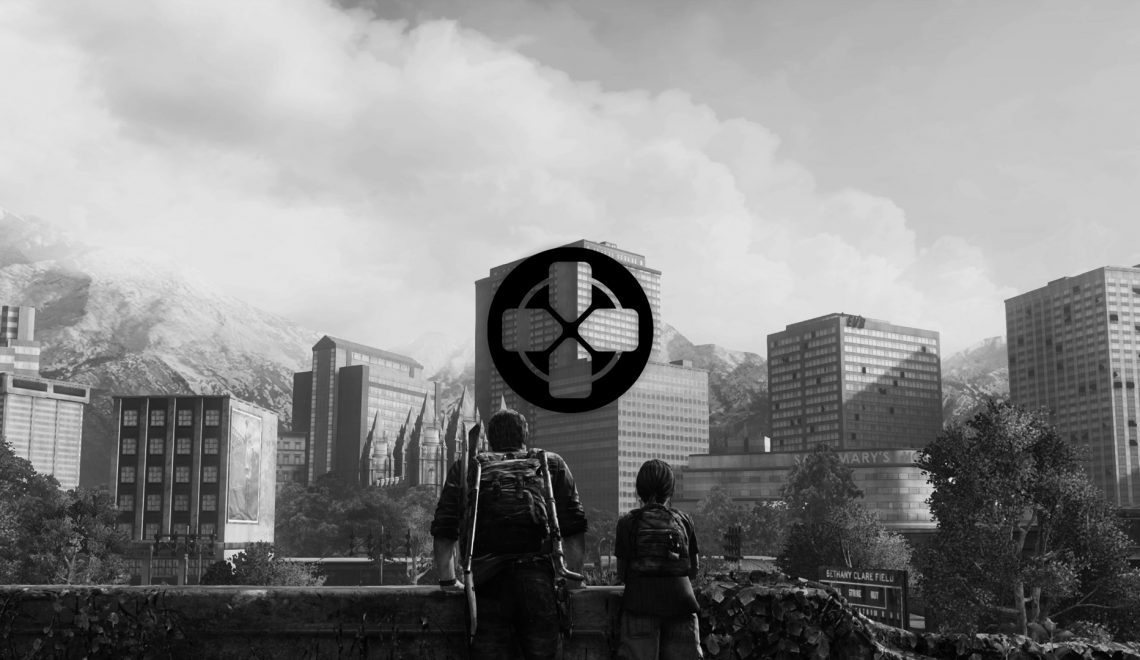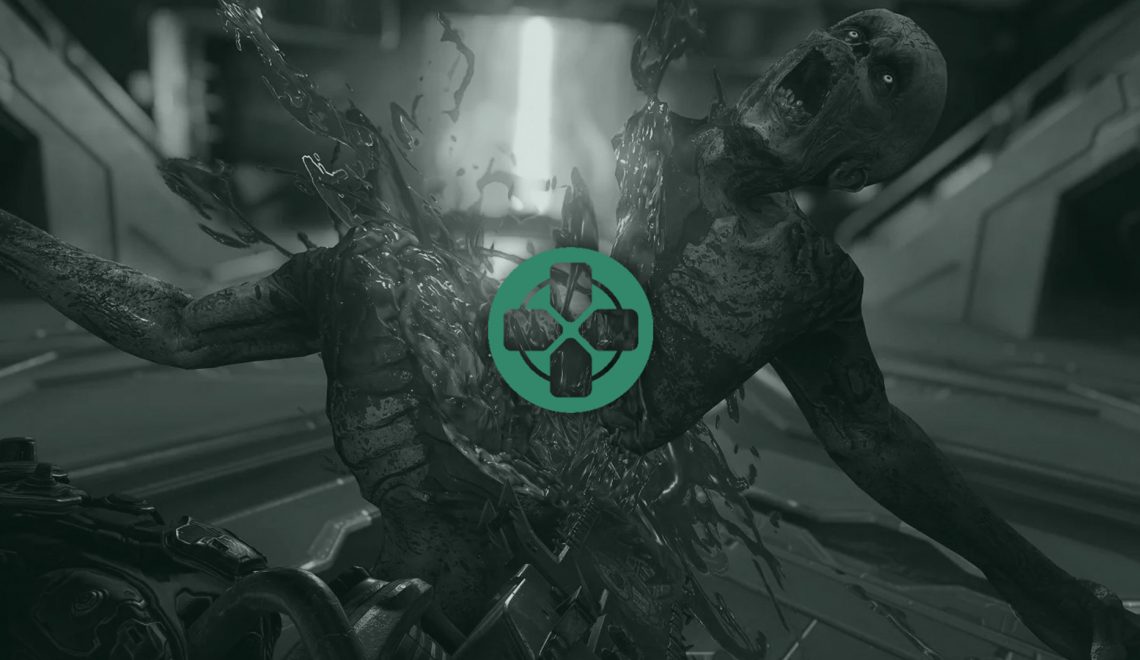This review was originally published as a user review on Game Informer.
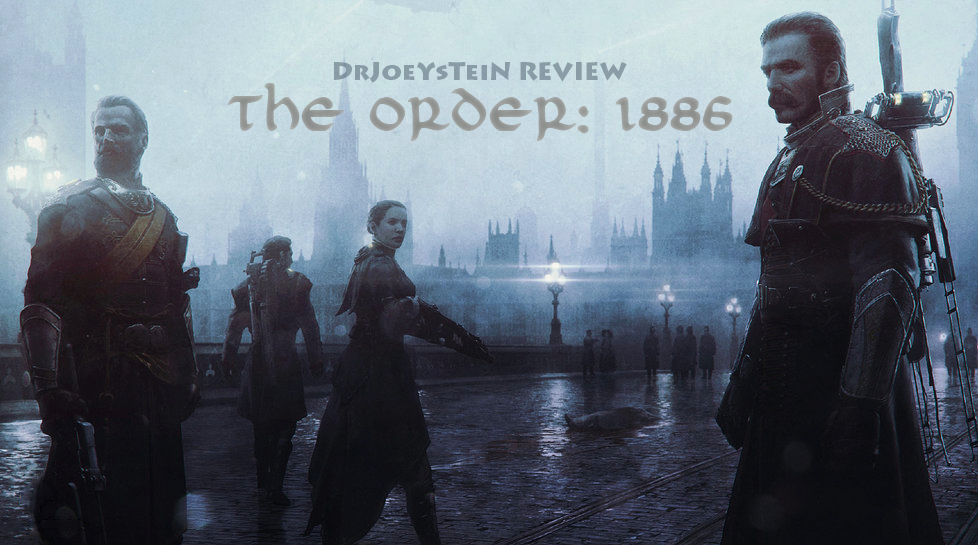
Here Lies Order in Disorder
There’s this thing about the loud voices of gamers: If you listen to what they say about any given video game without delving deeper into what might really be going on with something, you might be needlessly deceived. An example? The Order: 1886 was bombarded with negativity because it runs at 30 frames-per-second and is presented in a letterbox format for “cinematic quality” (there are black bars on the top and bottom of the screen, like a widescreen movie). The nail was almost driven in the coffin when people found out you could complete the game in less than 4 hours.
Without bothering to be open to what Ready at Dawn Studios was trying to accomplish with the game’s visuals and not realizing that players who rushed through the game failed to mention it’s around 8 hours on a normal playthrough, people quickly evacuated the hype train. Months of concerned first impression articles and mixed reviews at launch from game journalists didn’t help either..
I was thrilled about The Order: 1886 with its alternate history, Victorian setting, and solid-looking third-person shooter gameplay. And others may say what they want about the graphics, but the game’s objectively one of the most impressive feats on consoles in that category, even topping titles like The Last of Us, Ryse, and Killzone: Shadow Fall in more ways than it doesn’t. However, from what I gathered in reviews and reactions upon the game’s release, a few of my fears were confirmed from what I was wary about from having viewed gameplay demos. So, I rented it for two days and experienced all it had to offer instead of purchasing it. Did The Order slay my dragon of doubt with a sword of ingenuity, or was it gobbled up, being too weak to overcome its own shortcomings.
With that analogy in mind, think of The Order as a knight that managed to inflict a few blows on this dragon that represents my doubt. He couldn’t claim victory, but managed to somewhat impress after a valiant fight. In other words, the game captivated me on some fronts while failing overall to leave a lasting impact. What then did Ready at Dawn’s console debut do right and wrong?
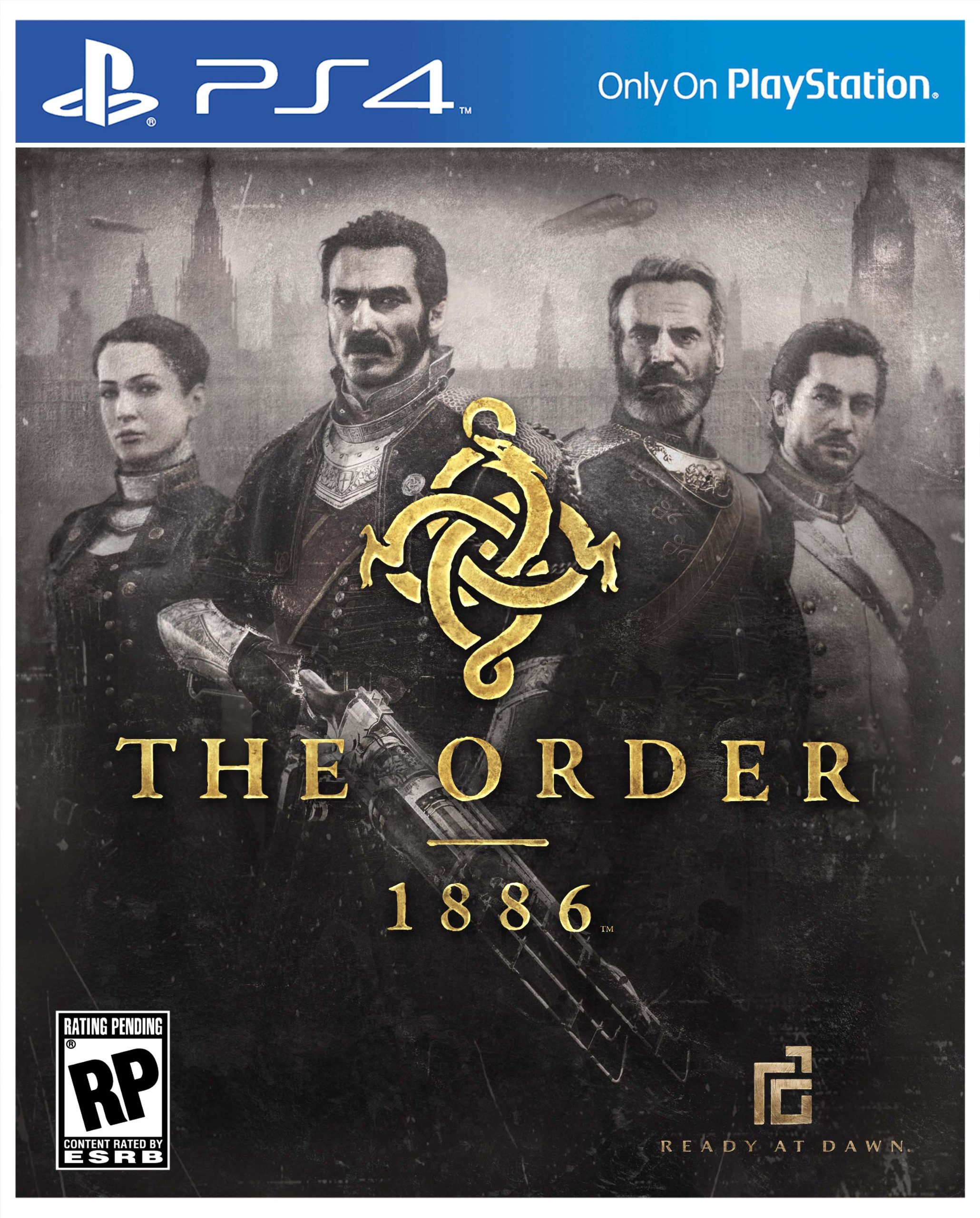
Title: The Order: 1886
Developer: Ready at Dawn Studios
Publisher: Sony
Release Date: 02/20/15
Platform: PS4
Genre: Third-Person Shooter
Reception (Metacritic): 63%
Gameplay
The Order is a third-person shooter. You’ve got cover-based shooting, over-the-shoulder aiming, a revive system akin to how Gears of War’s works, an arsenal of two main weapons, grenades, and a pistol…there really isn’t much that makes it stand out in a genre that’s already been pioneered by the likes of Epic Games and Naughty Dog, and that’s somewhat of a downfall. It certainly has slick gunplay (the recoil and ways that weapons function feels satisfyingly heavy, realistic, and empowering) and the “stop-and-go” motion to the main character’s movement looks and feels natural (e.g. the main character halts and then runs right if you suddenly direct him that way as he’s running forward). I mean, the game can be quite entertaining! Firefights are exhilarating at times with the game’s competent human AI enemies and the linear layouts of levels with cover-level objects and verticality offer simple yet explosive encounters. Also, the weapons are flat-out awesome and fun to fire, such as the devastating Thermite Rifle, which shoots a cloud of chemicals at foes that can be then be ignited with the weapon’s secondary magnesium shot. There’s an electricity firearm akin to Call of Duty: World at War’s Wunderwaffe DG-2, which charges up and instantly kills a target with lighting by disintegrating an opponent’s head or other extremity. Your usual fair of weaponry such as pistols and machine guns are here with a few cool twists, too, like a shotgun pistol that fires three rounds at once and the M2 Falchion auto rifle, which has an interesting attachment that shoots out a puff of pressurized air to briefly stun enemies. After playing The Order, I feel like its arsenal is a distinct, memorable collection among the firearm libraries of other shooters, and I consider the weapons balanced, with the more powerful ones having less ammo and the more standard fair having more of it to come by; all of them had their uses for particular shootouts across every campaign chapter. But this game is not without its problems and lack of originality.
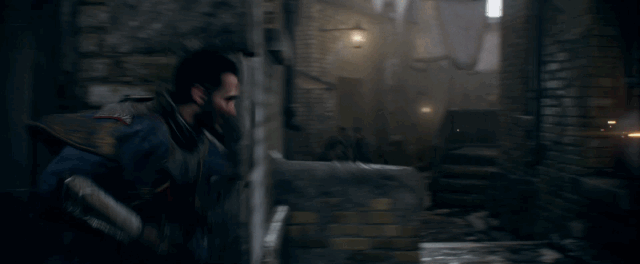
You can just feel the weight in that lean from behind cover. Awesome.
While the cover-based movement is fine, shifting to other locations during firefights is not that intuitive. Moving out of cover to other advantageous spots is not as smooth as it could be because the character occasionally takes too long to crouch back down and not move as quickly as I would like. For example, moving to an adjacent point requires you to stand up, move, and then crouch back down. There are no implemented controls for being able to duck and slide in various directions in swift motions. Quick time events happen occasionally, but most of them are pointless, used for opening doors or moving debris, completing melee attacks, etc. There’s an interesting spin on enemy encounters though, which sometimes have you move the camera around in a slow-motion state to look for additional ways to attack with a couple of environmental objects, but there are barely any of these QTEs throughout the campaign, which was disappointing on top of how little they mean in the first place. Now, there’s an admittedly cool slow-motion mechanic you can activate called Blacksight that slows down time and allows you to execute a small number of enemies. To be honest though, I didn’t feel compelled to use it that much (I’m weird like that), but it’s something fun to work toward as you build up its meter with your kill count.
The AI for the “scary” Lycans is awful since they have predictable strategies for attacking you that never vary, and the boss fights against them left me wanting far more, since all of them consist of a form of QTEs with melee attacks that are incredibly easy to complete. There are also puzzle-like elements with devices that disrupt electronics or open locks, but again, these are trite as well since I wouldn’t even consider them “puzzles.” Do you consider picking locks in Skyrim as puzzles? If not, there’s an example for you about what they’re like. You’ve got stealth sections that involve killing enemies from behind and only half of a level where you can do this with a crossbow, but they are hardly as well executed as, say, what Wolfenstein: The New Order managed with its seemingly out-of-place stealth sections. They just slow the pace down in a bad way, and if enemies hear you even a bit (specifically when you sneak behind them), they will instantly KO you, which people have said is extremely frustrating, but I found it more…unnecessarily hard than unfair. The only option you have is taking them down with a punishing, one button press QTE…yes, it’s not that great.
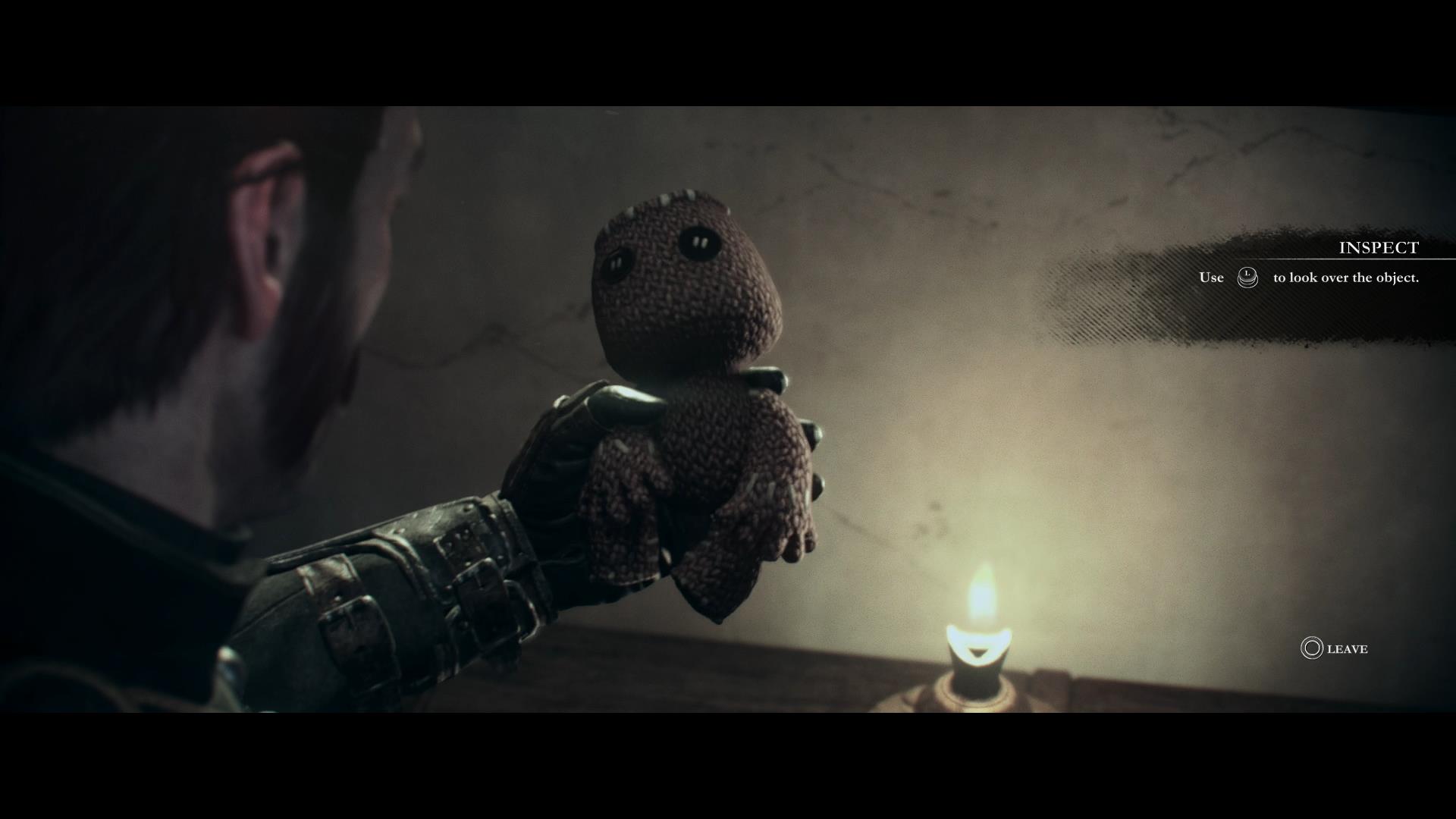
Where have I seen this before…
Oh, and coupled with the linearity of the levels (which isn’t bad in itself), the worst offender of all with the gameplay is how much of a big deal was made about the secret objects you find in levels. You can rotate any of them in your hand and turn them over, which looks absolutely amazing, but it’s honestly a joke. Most of these objects serve no purpose at all, which had me infuriatingly scratching my head during moments when I, for example, pick up a photograph of a family with no context. What’s the point? That’s what I kept asking myself as I kept picking up more things, and the same goes for audio recordings you can collect. When they do glean information about the game’s world, it’s annoyingly ancillary, and you can’t even inspect these items again in an archive! It’s especially frustrating with some objects that have incredibly small detail or text like newspapers, which I cannot decipher since there’s no info or text to go along with them that informs me why I should care about scooping this stuff up at all except for adding a Trophy to my PSN account.
The point is that The Order is a structured, linear experience, which is certainly fine for the most part considering its aim to imitate a cinematic experience, but the gameplay as a whole simply does not carve its own mark in its genre. It has a solid framework to build upon in future titles, and I was certainly surprised by how much fun I was having when the combat flowed nicely, but many of the features touted before the game’s release are devoid of creativity. Several mechanics are missing from the overall gameplay that would smooth out the flow of the experience as well, so The Order may get some things wrong, but that’s not the central problem. It’s just…safely average. That’s the issue.
Story
As I said before, the premise is promising in every sense of the word. You play as Galahad: A Knight of an order founded by King Arthur, which is, you guessed it, The Knights of the Round Table. However, in this world, a segment of humanity evolved into imposing half-breeds called Lycans (essentially werewolves) around 800 A.D. that threatened to wipe out humans. However, King Arthur founded his order a couple of hundred years later and discovered a substance called Black Water that prolonged the lives and healing factors of the Knights who ingested it. Humanity found its way to fight back, and with advantages far ahead of our world’s time in technology, engineering, weaponry, and more during a spin on the Industrial Revolution, we partake in a coherently constructed alternate-history, Victorian, setting with Gothic themes that’s begging to be explored. In our particular tale in the late 1800s, Galahad and his fellow comrades in London have discovered that rebels fighting against the wealthy bureaucracy’s treatment of the lower-class (a relevant conflict considering the Industrial Revolution) are seemingly working with Lycans. So, the Knights are motivated to investigate this impossible union, which opens a whole can of worms leading to revelations and twists that flip Galahad’s world upside down.

Galahad is not amused. Ever. He’ll cut you.
The plot really goes places for the first few hours! I love the inspirations that drive the story, and I was more than intrigued by the mysteries that were being weaved that led to greater surprises along the way. The characters were stunning in their roles as well, and I commend the actors and actresses, especially those who portrayed Galahad and his friends Nikola Tesla (yes, Tesla is here!), Lady Igraine, Percival, and Marquis de Lafayette. They have awesome chemistry with one another that helps build their characters and changing relationships throughout the narrative. Unfortunately, some aspects of it fall apart as the campaign moves along. Let’s start with the antagonists. The narrative attempts to build up its central villain and foes convincingly, but they are so detached and undeveloped that I never felt anything much of them, and that even goes for some who are traitors. Some of the major plot twists cause the story to change focus and derail its pacing, which come around and shock you at first, but are not expounded upon enough to make them as impactful as they should be to the story. For example, an entirely new enemy is introduced halfway through the game, but you never encounter them at all during gameplay. They merely serve to move the plot along and expose this “central” antagonist I’m supposed to care about. Much more could’ve been done with this…new enemy types, more varied level design that plays on their unique abilities compared to the Lycans, etc.
Oh, and Galahad is a character I found hard to like. His gentleman-like personality is fine, but his abrasiveness and seemingly flexible nature combine to make him do questionable things that, again, move along the story. Basically, to uncover the mysteries he wants to solve, Galahad has to go behind lines and kill a good amount of people I would deem possibly innocent or unaware of illegal activity they might be indirectly involved in. Galahad seems to not have any conflict with this for some reason, and I think it brings up that infamous issue of “ludonarrative dissonance” people associate with BioShock Infinite, Uncharted, and what have you. In many of the game’s later sections, I understood why Galahad had to resort to violence, but many times I wondered why in the world non-lethal alternatives were not an option, which could’ve indeed fleshed out the gameplay in a substantial manner to allow for more methods in tackling scenarios. In the end, it’s frustrating to have a story with an impressive setting, premise, and main cast of protagonists soured with poor direction.
Visuals
Ignoring that The Order runs at 30 frames-per-second, it’s the most beautiful game I’ve ever played. Period. Even PC gamers should admit that this game is a technological work of marvel for what it manages to accomplish on a console. The lighting, particle effects, cloth physics, motion capture, and even hair…it’s unbelievable. If Ready at Dawn was trying to show the power of the PS4 here, they went above and beyond that goal with how breathtaking everything is in detail, scope, and design.

Would ya just LOOK AT IT. Seriously, the graphics are crazy good.
I also think the art department did a splendid job. The clothing of characters, architecture of alleyways, castles, and houses of Victorian London, grounded aesthetics of the futuristic tech and weaponry…this game is captivating eye candy in all its gloomy, industrial glory. I don’t recall experiencing any glitches or graphical hiccups either, so my only major complaints are the frame rate and widescreen presentation, which aren’t big deals in the first place if we’re being honest here. They’re just…inconveniences, I suppose, so don’t make a big deal about it and enjoy what the game does accomplish very well.
Audio
The Order is proficient with its sound effects. Perhaps the guns could’ve had more “oomph” to them, but everything else from the sounds of the Knight’s clothing and equipment swishing and clacking together to the snarling of the Lycans (I’m honestly thinking about not commenting on the sound effects for future reviews unless there are issues, since there’s so little to say!). If you remember my comments on the characters, you’d be right in assuming that the voice acting as a whole lives up to the game’s cinematic goals. Even with my mixed feelings about Galahad, he along with his fellow Knights definitely make the banter between them and abundance of cutscenes more than worth sitting through. A couple of characters sounded a bit contrived in their efforts to sell this cinematic title, but there’s not much to harp on.

London’s a gloomy, cruel place…are you ready to uncover its darkest secrets?
Oh boy, now the music…the music is an absolute pleasure to listen to, whether you’re playing the game or not. Jason Graves nails down every major aspect of what to expect from music with this game’s setting and themes in mind while shockingly turning the tables on how the score was executed. Rich, somber strings that exude an air of classical music? Check. A score that utilizes some percussion, a choir, woodwinds, and strings without brass or violins? Oh, well, that’s quite different! This lack of instrumentation you would usually find in a video game/Hollywood orchestra, however, is what makes The Order’s tracks distinct and memorable. The strings and woodwinds have to fill in the gaps left by the brass and violins with more complex melodies and impressive playing, and it truly shows in tracks like The Hidden Enemy (only a quartet plays this action-packed song!) and Agamemnon Rising. Then there are others such as the spine-chilling Knighthood and Sir Galahad, which build in grandeur and sound with its male choir and strings. If there’s one thing that’s near perfect about The Order, it’s most definitely the music due to how innovative it is within the realm of video game orchestration by pushing the bounds of what we think AAA game scores should be like. And if you’d like to hear a bit more about The Order’s soundtrack and Graves’ other works, check out this interview I had the pleasure of doing with him.
Replay Value
Video games are pretty good at wanting you to come back and play them even more. You’ll have the brilliance of Batman: Arkham City come along with its substantial side missions and addicting Riddler trophies, or fair attempts at replayability with a super hard difficulty mode or new equipment to use if you want to go through a second playthrough, like with Dead Space. Movies even have “replay value” with commentaries, behind the scenes footage, interviews with voice actors, and whatnot. The Order has an Extras menu option. You want to know what’s there?
Credits.
That’s all you’ll see even after finishing the campaign. You can go back and try to obtain any objects or recordings you missed, but based on my comments earlier on the worth and little effort put into getting those collectables, you probably know how I feel about how they contribute to replay value. You play the game for 7-10 hours and you’re done. It’s as simple as that, and that disappointing as well.
Conclusion

Moments of mediocrity or awe. This game had a mix of both reactions from me.
Remember how I mentioned how The Order: 1886 is like that knight who couldn’t beat that dragon? Now that you understand the specifics of my thoughts on the game, think of its successes as the knight’s outfit. He has shining, ornate armor, great looks, and a commanding voice that personify the game’s visuals and audio. However, these outward aspects betray the knight’s actual proficiency in swordsmanship and cleverness. Like the game, he’s above average in what he can actually do compared to his fellow knights. This is The Order’s downfall. It’s so caught up in its orderly appearances that it fails to impress where it truly matters with gameplay and story, which is where the cracks start to show with its internal disorder.
If this knight gets his act together and sharpens up his skills the next time around (i.e. a sequel), he’ll be known around the world for his awe-inspiring appearance and abilities. But for now, he’s only got the former down, and in this day and age, that ultimately has a far lesser impact than the latter in regard to video games.


